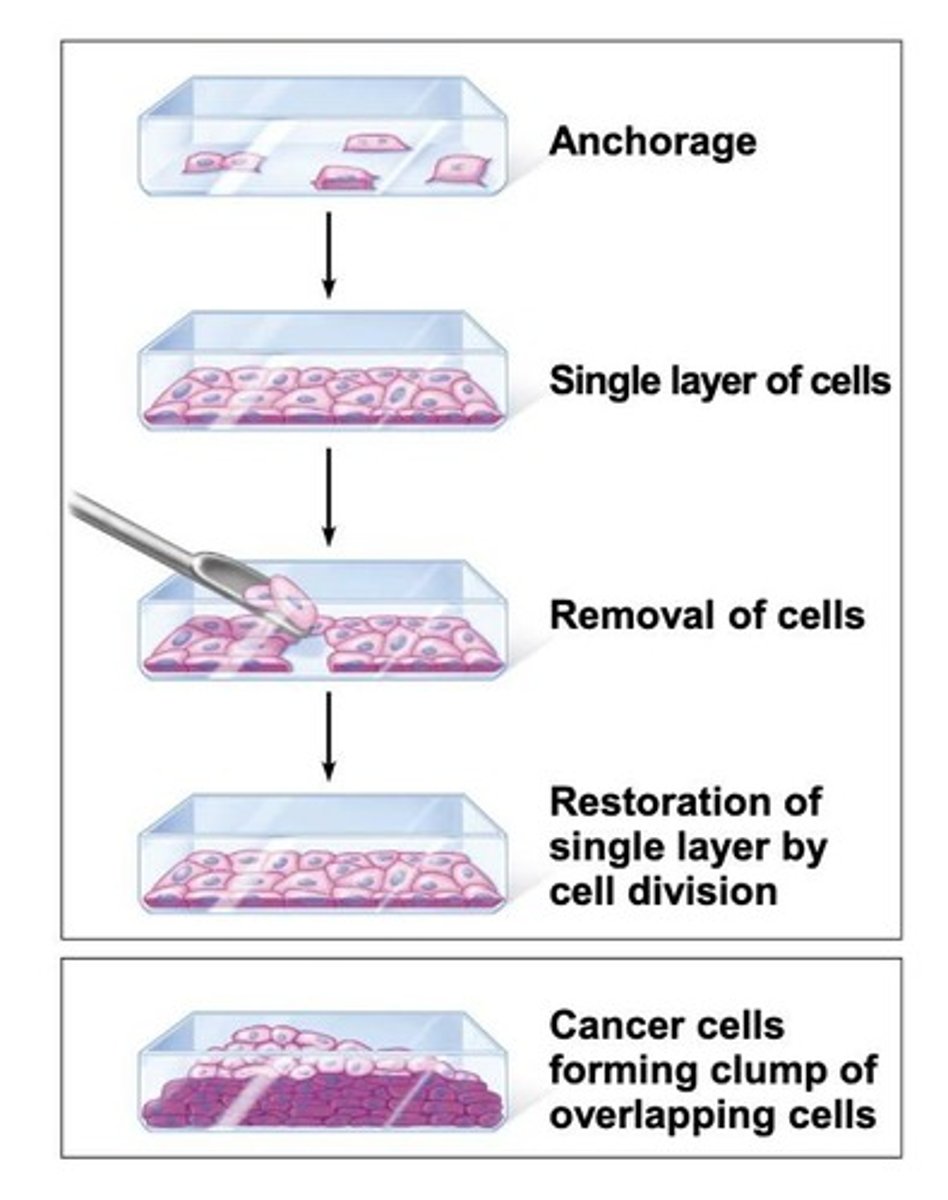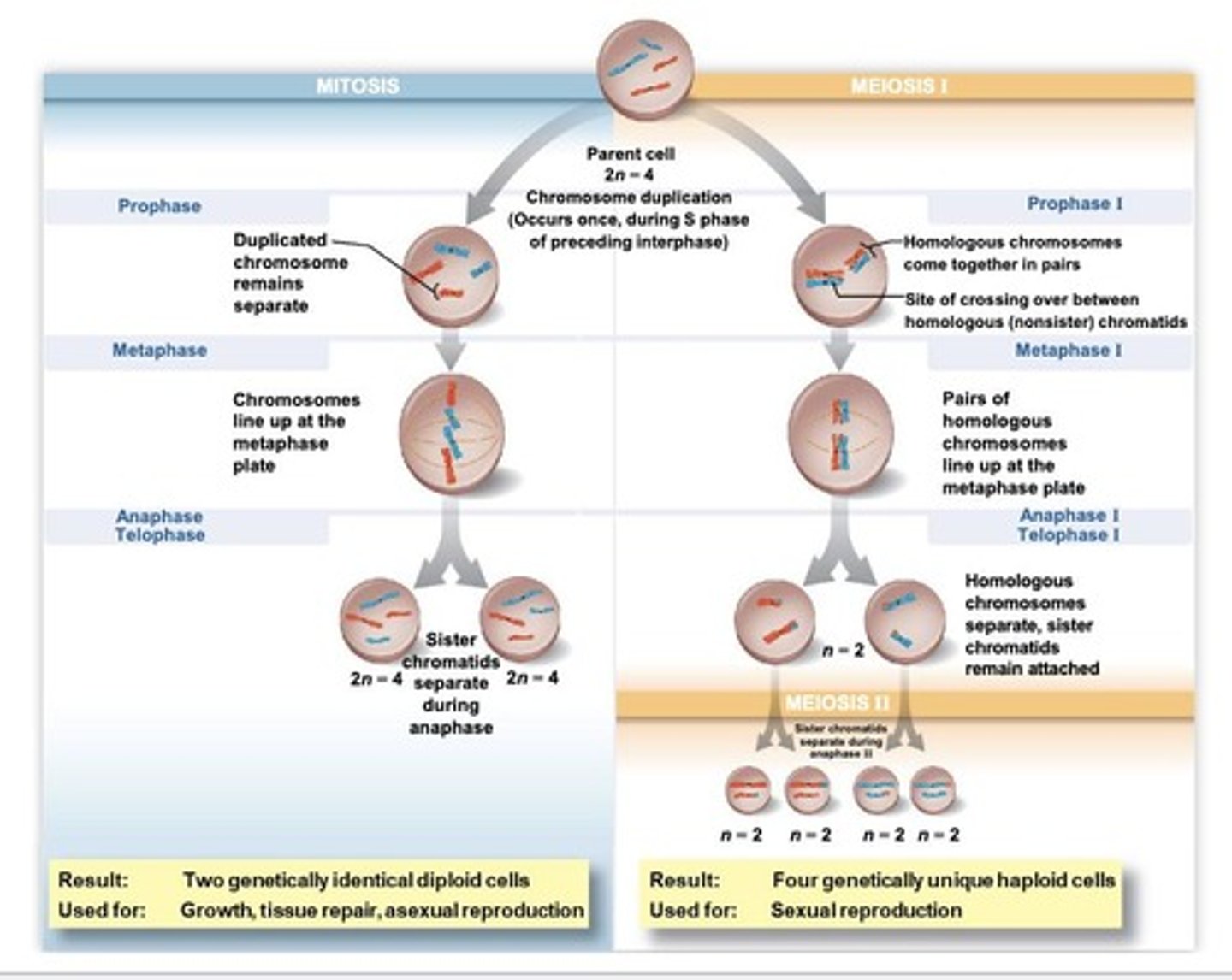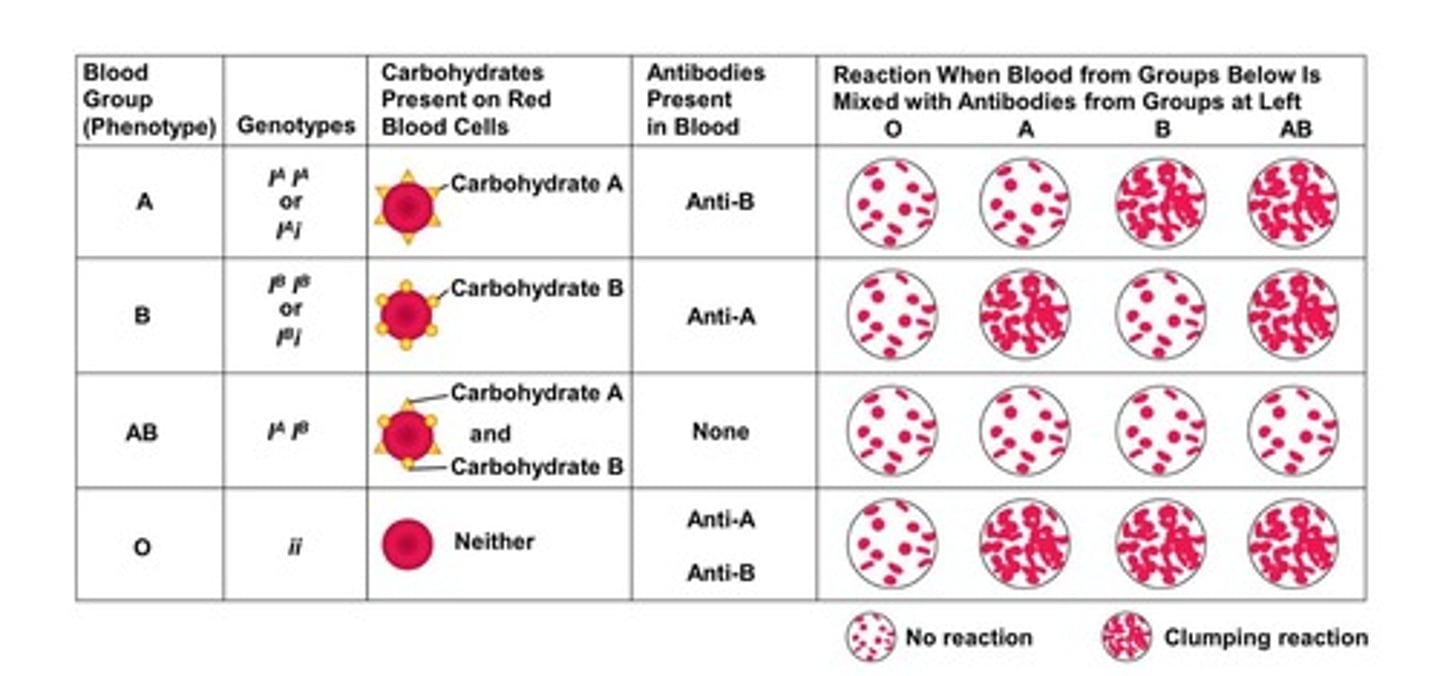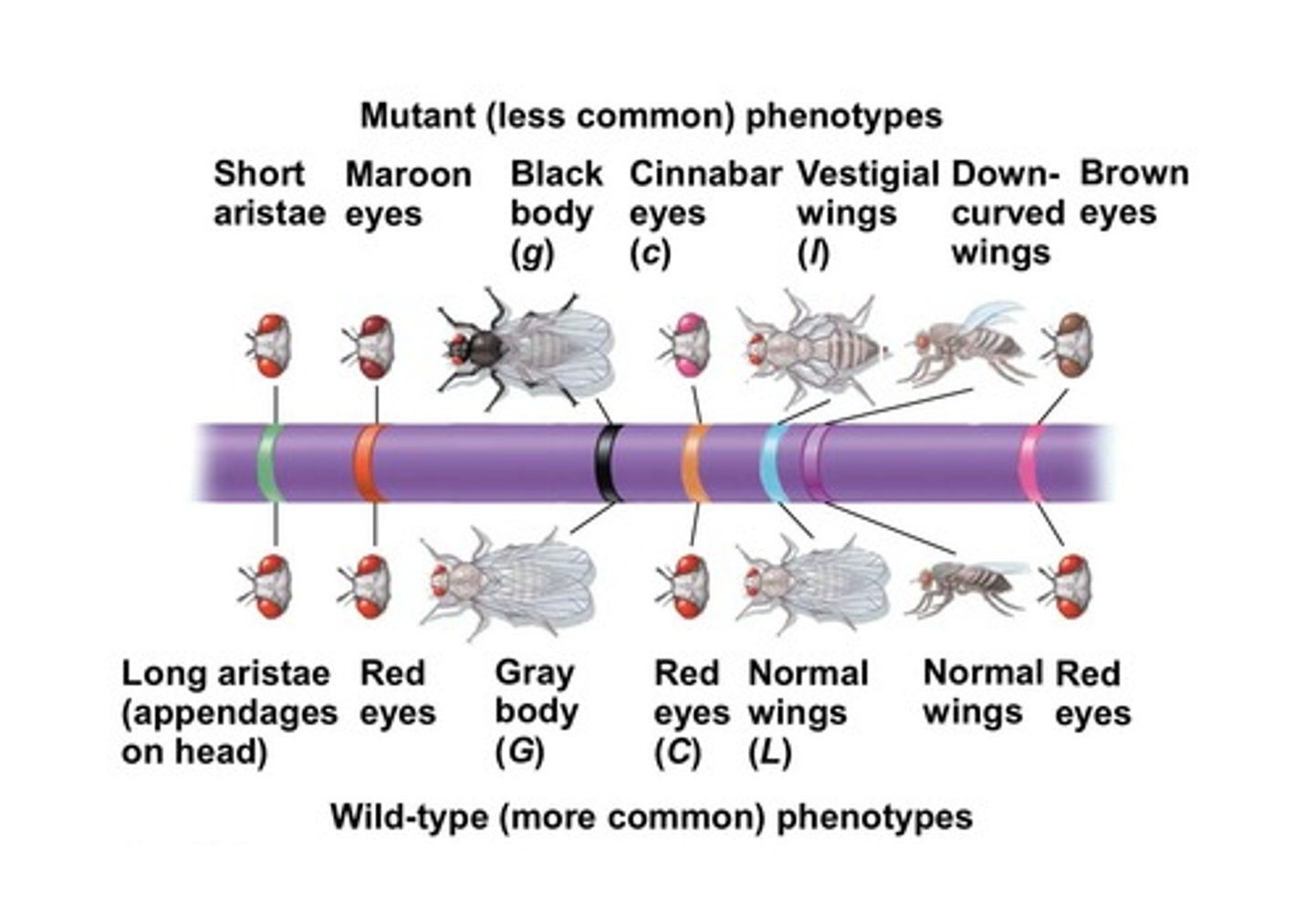Cell Division and Genetics Overview
1/108
There's no tags or description
Looks like no tags are added yet.
Name | Mastery | Learn | Test | Matching | Spaced |
|---|
No study sessions yet.
109 Terms
Cell Division
The heart of the reproduction of cells and organisms because cells originate only from preexisting cells.
Single Cell Division
Reproduction process exemplified by yeast.
Multicellular Division
Involves development, growth, and repair in organisms like people.
Asexual Reproduction
Producing offspring that are all genetic copies of the parent and identical to each other.
Sexual Reproduction
Creates a variety of offspring.
Binary Fission
A method of asexual reproduction in prokaryotic cells meaning dividing in half.
Cell Cycle
An ordered sequence of events from the time a cell is first formed from a dividing parent cell until its own division.
G1 Phase
Phase of the cell cycle characterized by lots of growth.
S Phase
Phase of the cell cycle known as 'Synthesis', where DNA replication occurs.
G2 Phase
Phase of the cell cycle involving growth and preparation for mitosis.
M Phase
Phase of the cell cycle where mitosis occurs, distributing duplicated chromosomes into two daughter nuclei.
Interphase
The phase of the cell cycle that includes G1, S, and G2, excluding mitosis.
Prophase
Phase of mitosis where chromatin condenses into visible chromosomes and the nuclear envelope begins to break down.
Metaphase
Phase of mitosis where chromosomes line up along the metaphase plate and spindle fibers attach to the centromere.
Anaphase
Phase of mitosis where sister chromatids are pulled apart by spindle fibers toward opposite poles of the cell.
Telophase
Phase of mitosis where chromosomes arrive at the poles, decondense back into chromatin, and two new nuclear envelopes form.
Cytokinesis in Animal Cells
Occurs when a cell constricts, forming a cleavage furrow, and microfilaments constrict to completely pinch the cell.
Cytokinesis in Plant Cells
A membranous cell plate forms and then splits the cell into two.
Effect of Environment on Cell Division
Most normal cells divide only when attached to a surface and continue dividing until they touch one another.
Growth Factors
Signals that affect critical checkpoints in the cell cycle and are usually necessary for cell division.
Cancer
Characterized by growing out of control, producing malignant tumors that can invade other tissues.

Benign Tumors
Tumors that do not metastasize (spread to new areas).
Difference between Mitosis and Meiosis
Meiosis divides twice to form four daughter cells, while mitosis produces two genetically identical diploid somatic daughter cells.

Meiosis
Produces four genetically unique haploid gametes.
Diploid
Cells with two sets of homologous chromosomes.
Haploid
Eggs and sperm are haploid cells with a single set of chromosomes.
Sexual life cycles
Involve the alternation of haploid and diploid stages.
Variation in Meiosis
Random arrangements of chromosome pairs at metaphase I lead to many different combinations of chromosomes in egg and sperm.
Random fertilization
Greatly increases genetic variation as any sperm can fuse with any egg, totally by chance.
Independent assortment
During the formation of gametes, different genes independently separate from one another.
Inheritance of traits
The inheritance of one trait doesn't automatically affect the inheritance of another trait.
Crossing over
An exchange of corresponding segments between nonsister chromatids of homologous chromosomes that increases genetic variability.
Nondisjunction
Abnormal chromosome count resulting from the failure of homologous chromosomes or sister chromatids to separate during meiosis.
Karyotype
A photographic inventory of an individual's chromosomes.
Preparation of a karyotype
Involves isolating white blood cells, stimulating them to grow, arresting them at metaphase, and photographing under a microscope.
Abnormal Chromosome numbers
An extra copy of chromosome 21 causes Down syndrome.
Trisomy 21
The most common chromosome number abnormality resulting in Down syndrome.
Alterations to chromosomes
Can cause birth defects and cancer through chromosome breakage leading to deletions, duplications, inversions, or translocations.
Law of Segregation
Each individual has two alleles for each trait that separate during the formation of gametes.
Law of Independent Assortment
Genes for different traits separate independently when gametes are formed, creating genetic variation.
Law of Dominance
When two different alleles are present, one is dominant and masks the effect of the other (recessive).
Dominant allele
A dominant allele masks the effect of a recessive allele when both are present.
Recessive allele
A recessive allele only expresses its trait when both alleles for a gene are recessive.
Homozygous
An individual is homozygous for a gene if they have two identical alleles for that gene.
Heterozygous
An individual is heterozygous for a gene if they have two different alleles for that gene.
Allele
Alternative versions of genes that account for variations in inherited characters.
Character
Variation among individuals.
Traits
Variations in a character.
Punnett square
Shows the four possible combinations of alleles that could occur when these gametes combine.
Mendel's work
Revolutionary because he used experiments, math, and clear evidence to show that traits are inherited through discrete units, not by blending.
Blending Theory of Inheritance
The idea that traits from parents simply mixed in their offspring, like mixing paint colors.
Genotype
The genetic constitution of an individual, represented by alleles.
Phenotype
The physical appearance of an organism as a result of its genotype.
PP
Example of homozygous dominant alleles.
pp
Example of homozygous recessive alleles.
Pp
Example of heterozygous alleles.
Locus
The specific position of an allele on a chromosome.
Gametes
Reproductive cells that carry alleles from each parent.
Medium-height child
An example of the blending theory where a tall parent and a short parent produce an offspring.
Purple flowers
The phenotype expressed when at least one dominant allele (P) is present.
White flowers
The phenotype expressed only when both alleles are recessive (pp).
Two recessive alleles
Required for a recessive trait to show up in the phenotype.
Allele combinations
The result of combining alleles from each parent in a Punnett square.
Interpret the Results
The process of determining the possible genetic combinations and phenotypes based on the filled squares in a Punnett square.
Genotype
The genotype refers to the genetic makeup of an individual - the specific alleles (versions of a gene) that an organism inherits from its parents.
Phenotype
The phenotype refers to the observable characteristics or traits of an organism, which result from the interaction between its genotype and the environment.
Law of Independent Assortment
States that the alleles of a pair segregate independently of other allele pairs during gamete formation.
Law of Segregation
The Law of Segregation relates to Anaphase I of Meiosis I, and it ensures that only one allele for each gene goes into each gamete.
Anaphase I of Meiosis I
During Anaphase I of meiosis, homologous chromosomes (one from mom, one from dad) separate and move to opposite sides of the cell.
Testcross
Mating between an individual of unknown genotype and a homozygous recessive individual can reveal the unknown genotype.
Family Pedigrees
Genetic traits in humans can be tracked through family pedigrees.
Recessive Disorders
Many inherited traits in humans are controlled by a single gene.
Carrier Screening
Carrier screening, fetal testing, fetal imaging, and newborn screening can provide information for reproductive decision, but may create ethical dilemmas.
Complete Dominance
Mendel's pea crosses always looked like one of the two parental varieties, which is called complete dominance.
Incomplete Dominance
Incomplete dominance results in intermediate phenotypes.
Codominance
Many genes have more than two alleles that may be codominant.
ABO Blood Group
ABO blood group phenotype in humans is controlled by three alleles that produce a total of four phenotypes.

Pleiotropy
Pleiotropy refers to the phenomenon where one gene influences multiple phenotypic traits.
Heterozygous
An individual with two different alleles for a specific gene.
Alleles
Different versions of a gene that can exist at a specific locus.
Gamete
A reproductive cell that carries half the genetic information of an organism.
Phenotypic Traits
Observable characteristics of an organism that result from the genotype and environment.
Mendel's Law of Assortment
The principle that alleles for different traits are segregated independently during gamete formation.
F1 Hybrids
Offspring resulting from the cross of two different parental varieties.
Homozygous Recessive
An individual with two identical recessive alleles for a specific gene.
Normal Parents
Parents who do not exhibit a trait but may carry a recessive allele for that trait.
Intermediate Phenotypes
Phenotypes that are a blend of the parental traits, seen in incomplete dominance.
Pleiotropy
Occurs when one gene influences multiple characters.
Sickle cell disease
An example of pleiotropy that affects the type of hemoglobin produced, the shape of red blood cells, and causes anemia and organ damage.

Codominant alleles
Sickle-cell and nonsickle alleles are codominant.
Carriers of sickle-cell disease
Have increased resistance to malaria.
Polygenic inheritance
A single phenotypic character results from the additive effects of two or more genes.
Human skin color
An example of polygenic inheritance.
Multiple allele system
A gene that exists in three or more different forms (alleles) within a population.
Alleles in a population
While an individual can only have two alleles for a specific gene, the population can have many different allele combinations.
Environmental effects on gene expression
The environment affects many characters and traits are influenced by both genetic and environmental factors.
Linked genes
Genes on the same chromosome that tend to be inherited together.
Bateson and Punnett's study
Studied plants that did not show a 9:3:3:1 ratio in the F2 generation.
Crossing over
Produces new combinations of alleles between homologous chromosomes.
Recombinant gametes
Gametes that contain linked genes separated by crossing over.